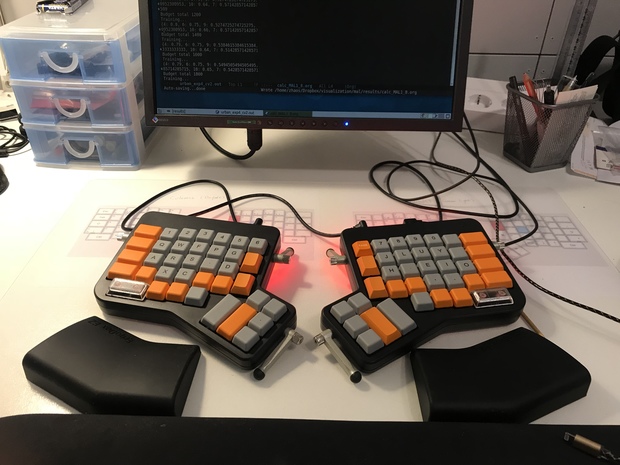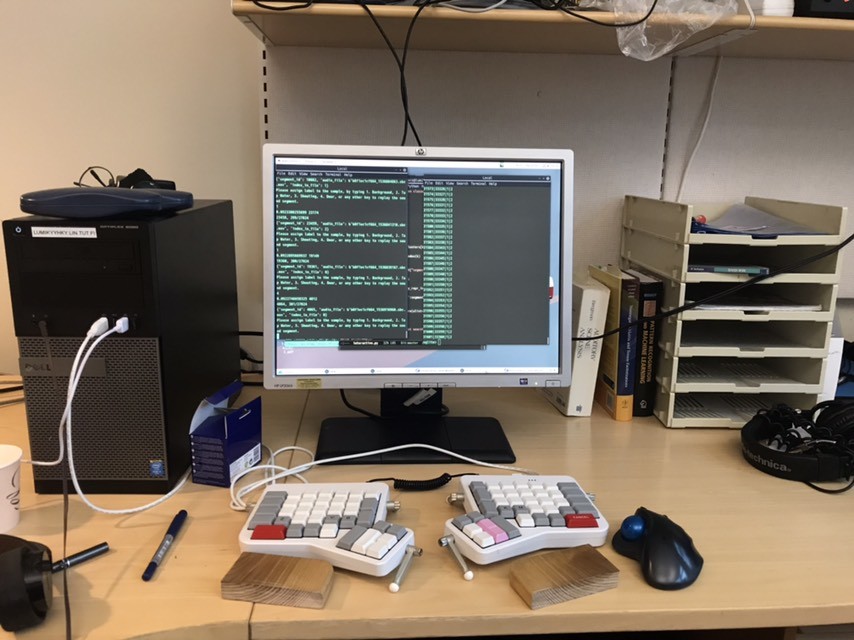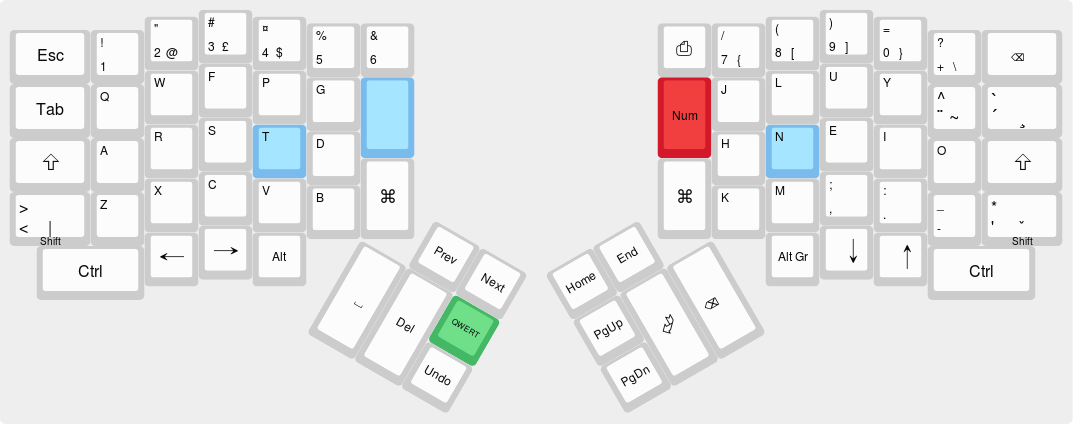Ergodox keyboard – more than looking cool
Last modified 2022-03-04
After I got my Ergodox EZ, every one who visits my office leave a comment "Ah, your keyboard is cool." Maybe I should proudly write a review for it.
Ergodox has a few intereting features compared to a traditional keyboard: split design, programmable layout, thumb keys and mechanical switches. As a heavy keyboard user, a comfortable keyboard means health and happiness... The price is not cheap: it costs 300 USD money-wise and pretty much time on custmization and getting used to it, but I think it difinitely worth it in long term.

Health of wrists: the start of the story
My wrists started making clicking sounds about six years ago and my physical therapist suggested me to use keyboards with spit design. Following her advice, I bought a Microsoft Sculpt, which was a decent choice, coming with a cute ergonomic mouse. A bit later, I bought an elbow support and an electric height-adjustable desk. Those purchases helped me much to reduce the strain problem on my shoulder and back by alternating between sitting and standing position. However, I started to feel dissatisfied with Microsoft Sculpt. It has a big Insert key near Return, which sometimes leads to annoying mis-operations. In addition, the ruberic switch is not physically responsive to type with. I hate Insert and Caps lock pretty much, since I never use them and they take such an important position on an ordinary keyboard. As a result, I started searching for a keyboard with a bit "special" layout.

Personalized layout: Colemak + Finnish layout + Emacs-oriented
There were some famous keyboards that with a bit improved layout, e.g. HHKB. It uses CTRL on the ordinaray position of Caps Lock, however it is not a split keyboard. After searching around with Google and YouTube, Ergodox EZ came into my sight. It took me more than an hour for me to understand its features before placing my order.

I experienced quite some hard times after the keyboard arrived. It has ortholinear distributed alphabetic keys, instead of slanted one as most keyboards have. I struggled with my typing speed for a few days, before I decided to try something really different. I completely switched form QWERT layout to Colemak, since anyway I have to take a time to recover my typing speed and Colemak seems to be a much more reasonable design than QWERT. As an example, the home key with Colemak are T and N, which is more common in almost all the languages than F and J in QWERT layout. My typing speed really suffers for abount one month. My word per minute (WPM) was only 15 in the beginning, whereas my previous speed was 55. After one month, the speed climbed to 50 and it eventually surpassed the old speed with 50 days of use with the new layout.

Personally, I am a Chinese, living in Finland, but using English at work. Typing Finnish is sometimes but not often needed. As as result, I did not program ä and ö in my layout. Instead I use the combination ¨ and a/o to type the two letters. In terms of the layout for symbols, I found Finnish layout more reasonable than US keyboard. For example, Shift+, makes ; is more intuitive than <. In addition, the use of of AltGr enables three symbols to be mapped with a key.
Emacs is an all-in-one text editor for me, working with almost all popular types of programming languages and structured documents such as Python and Latex. Furthermore, it is even a good tool for email reading and spreadsheet editing. It is a cool stuff, however the frequent use of CTRL caused repeated strain injury for many users. I learned from Xah Lee to type CTRL with palm, and I always use CRTL from the other side to combine with hot keys. The strain problem is thus avoided. My Shift key is one key above the conventional setting, since the pincky finger is much is easier to find this one in the home row. The combination of conventional Shift position with a alphabetic key in the same side is also a main source of repeated strain injury.
